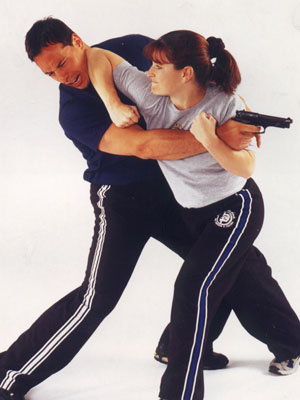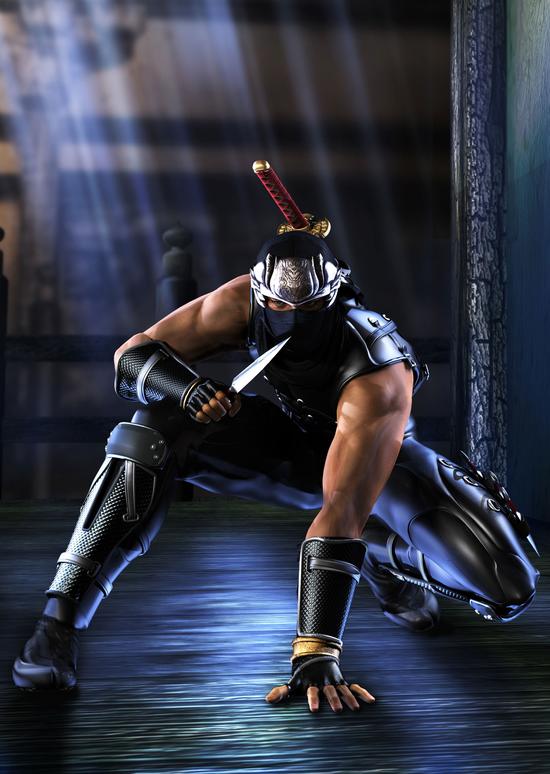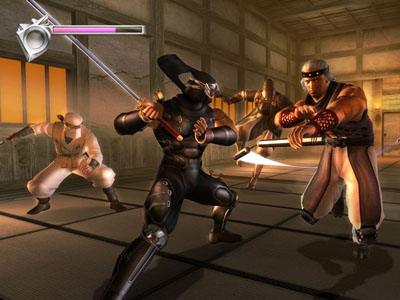Last updated on March 4, 2013
NOTE: This is a universal review of the original Ninja Gaiden reboot; it just as easily applies to Black and Sigma. There’s slight changes in each, but not enough to change this review in any noticeable way.
16 Then the Lord raised up judges who delivered them from the hands of those who plundered them. 17 Yet they did not listen to their judges, for they played the harlot after other gods and bowed themselves down to them. They turned aside quickly from the way in which their fathers had walked in obeying the commandments of the Lord; they did not do as their fathers. 18 When the Lord raised up judges for them, the Lord was with the judge and delivered them from the hand of their enemies all the days of the judge; for the Lord was moved to pity by their groaning because of those who oppressed and afflicted them. 19 But it came about when the judge died, that they would turn back and act more corruptly than their fathers, in following other gods to serve them and bow down to them; they did not abandon their practices or their stubborn ways. 20 So the anger of the Lord burned against Israel, and He said, “Because this nation has transgressed My covenant which I commanded their fathers and has not listened to My voice, 21 I also will no longer drive out before them any of the nations which Joshua left when he died, 22 in order to test Israel by them, whether they will keep the way of the Lord to walk in it as their fathers did, or not.” 23 So the Lord allowed those nations to remain, not driving them out quickly; and He did not give them into the hand of Joshua.
Judges 2
So God leaves the other nations (which he promised to help Israel take out) in their land as a test. This passage really sets the themes for the whole of the book of Judges – Israel cries out for salvation, God sets up a judge over the nation who subsequently saves them. Then, once things have settled down, everything goes right back to the way things were beforehand: Israel in sin. This is a vicious cycle if I’ve ever seen one. God sets the rules; if you don’t improve, bad things will happen. If you fail, I will help you, but I expect something in return. If you refuse to change, the same things will happen over and over again.
If there was ever a video game that reminded me of Judges, it’s Ninja Gaiden. It’s the eternal cycle of salvation and punishment echoed into video game form. Although the sequels are mostly excellent in their own right, it’s the first that has this perfect balance. It requires a lot out of you and gives a lot in return. If you lapse for a second, bad things will happen; it expects something, and if you don’t provide it, death occurs. If you refuse to change, the same things will happen over and over again.
That’s why coverage on this series always emphasizes its difficulty: it wants something specific. It does not want to be “friendly”, nor does it require an “open world”. The player is not king of the realm. The fundamental shift of video games this past decade has much to do with the understanding of modern identity. Open world games allow the individual to create his own experience and play the game “my way”. Linear games require a guiding hand, a designer who knows exactly what he/she wants the player to see and experience. Who is the most important person – the individual or the society? If it’s the former, then a game like Ninja Gaiden simply won’t appeal; it’s not much about you. It has everything to do with your own skills and your own ability to learn. If it’s the latter, than the designer is king. The obstacles that designer places before you exist as monoliths of your failure or triumphs of your gaming abilities.
However, Ninja Gaiden isn’t a hard game by definition; it’s a result of the times that it has gotten this label.Video game “difficulty” is a variable thing. One man’s ultimately challenge experience becomes a cakewalk for someone with skills developed from hundreds of hours invested in similar experiences. It’s a weird component of the industry, to be sure. Was anyone who played Devil May Cry challenged by Bayonetta? Probably not until the higher difficulty levels. On the other hand, a first time player will be utterly overwhelmed by the complexity of controls and functions to the point where they may just give up. It’s a guessing game, even if the video games journalism crowd has a hive mind mentality when it comes to describing it.
Ninja Gaiden’s 2004 reboot, in that sense, could be considered a “hard” or “difficult” game for the majority, but I do not believe it is either of these things. The game is tailored to your perception of the game’s relative challenge diving into the content – either it will be too hard, just right, or even too easy (once you get the hang of it). Much of this comes from the various obstacles that a player will have to deal with along the way, which are wildly different and too numerous to list – and all of them entertain.
First, we have the combat system. The rules of the game are quite simple – get from point A to point B, and kill every obstacle in your way. Sure, there are plenty of “puzzles” and the like, but the moments where combat is absent are solely there to let you breath a sigh of relief as you prepare for the next encounter. Ninja Gaiden gives the player many options to dispatch the enemy. In fact, I would go so far to say that there are too many, and this is not necessarily a bad thing. Each person will find their particular niche in the system, and work according to those mechanics.
Let’s say I am a very defensive player and I tend to choose weapons that protect me from all sides in the ever-expanding onslaught of foes. Most likely, I’ll choose a weapon like the Vigoorian Flail/Nunchaku, as they deal with a wide crowd of enemies with ease, provided I time my attacks correctly. The Flail can be used for crowd control, hitting multiple enemies at the same time and racking up huge combo totals in the process. Perhaps I am more offensive, and wish to play in a hit and run manner with incredibly powerful strikes that behead enemies in several blows of the blade; I may choose the Warhammer, or its clone the Dabilhro, in combat situations. Long-range combat with arrows, magic and the like can also be an option. There are many decisions like this in Ninja Gaiden – the rules are presented clearly and without holding your hand. There’s no tutorial to speak of, and you are basically thrust into a very difficult first level without any prior explanations; one just simply “learns”, rather than being forced to sit through a boring sequence where the game treats me like I have no idea how to use a controller.
Certainly, I cannot say this game is accessible for the layman – if you are looking for a “good time” or simply to “relax”, this game is not going to meet your expectations. The combat demands to be learned, and learned well, like a complicated fighting game. The Dead or Alive series (not surprisingly headed by the same director as these new Ninja Gaiden games) bears striking similarities to Ninja Gaiden not only in superficial ways. The dial-a-combo system (as in pressing a number of buttons in sequence to perform attacks) returns here, as well as the same emphasis on counterattacks and dodges.
Let’s be honest: in real life, if you were accosted by multiple attackers, you wouldn’t be aggressively lunging at all of them at once; you’d wait, pick your time and strike when needed, so you wouldn’t get stabbed and/or killed. Well, assuming I had any skill in hand to hand combat, anyway; going to karate and getting a black belt’s a little different than fighting six guys in a dark alley with bad intentions. Or someone with a gun.

To wit: I usually hate realism in games, but if that realism contributes to the game slightly, then go for it developer X! In this case, if a bunch of highly trained ninjas, soldiers, demons, and freakish flying things came out of nowhere and attacked you, you might be dodging and rolling everywhere.
Furthermore, you might also be countering attacks (as in the picture above!). Whereas in the fighting game Dead or Alive (the developer Team Ninja’s previous game) the block + foward or diagonal forward (for low attacks) is used, Ninja Gaiden necessitates a much larger control scheme and simply uses its attack buttons while blocking at the moment an enemy attacks. To demand that the player willingly relinquish their defenses would simply be madness – the odds are stacked against you here.
The main character, Ryu Hayabusa also has air attacks which come into great use (the diving Flying Swallow, or Divine Cicade Slash, are both effective), and several command throws. Ryu can jump and dodge through rolls to great effect (rolling jumping ends up being the most effective tool in the game at points) Although many say that the main strategy is to balance offense and defense when fighting, I believe it goes more like this:
1.Block like a madman. Blocking stops nearly everything in this game!
2.Wait for a proper time to strike or counter.
3.Kill enemy in the most efficient way possible (usually Flying Swallow or Izuna Drop, but your call).
4.Repeat, roll/jump to next enemy.
Of course, there are a variety of enemies and most tend to be melee attackers, but projectile wielding killers are always thrown into the mix, and you must be wary of them; not only do they interrupt your combos, they can open you up for insane amounts of damage from other foes attacking you at the same time. There’s no invincibility; when you pay, you PAY in Ninja Gaiden.
One has to prioritize about which targets are the most dangerous and eliminate them quickly – these tend to be large creatures, or those with dangerous explosive projectiles. There’s no time for “stylish play” like Devil May Cry. This is not about combos; it’s about survival, using your reflexes to their best effect with the tools at hand to, quite literally, act like a ninja should. In this respect, Ninja Gaiden forces you to treat every encounter as a life and death situation and act accordingly. Once you dedicate to an attack, it is impossible to interrupt; therefore, you must be fully invested in your particular attack; good timing is a requirement. Over time, the encounters will become easier only because the seriousness of the situations beats you senseless over and over again with the constant presence of the “Game Over” screen. Game Over actually MEANS something, as save points are you only way to “continue”, and they aren’t spaced conveniently. You will see it constantly, and unless you are dedicated, you will see it forever. Perseverance, memorization, pattern recognition, and skill are necessary to finish the game.
Continue to Part 2


